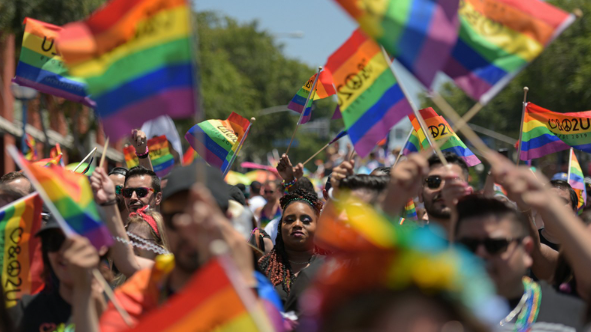The traditional gay pride flag that you’ve probably found worldwide is one of the many that exist in the LGBTQ+ community. Although the rainbow flag is the most well-known among numerous other personalized flags and signs that represent people of all genders and sexual orientations.
Pride flags have been a vibrantly colored sign of queer identity since the very first rainbow-hued LGBTQ flag was made in 1978. These flags represent the communities and are constantly evolving. As of writing the report, there are more than 20 existing LGBTQ plus flags which represent equality, gender identities, sexuality, and other communities.
The top five LGBTQ flags are highlighted below, along with their history, meanings, and colors. Pushpita Karim writes.
Pride Flag
The gay pride flag was and continues to be a cheerful, hopeful, and easily identifiable symbol of the LGBTQ+ community, and it has spread around the world, in both large and small cities. The pride flag is the mother or in another way, it is the parent of all other existing LGBTQ flags. Gilbert Baker, a gay military veteran, and drag queen were tasked by another activist in 1978 with creating a celebratory symbol for the gay community.
Baker viewed the rainbow as a natural flag from the sky, so he used eight different colors for the stripes, each of the colors has a different meaning and concept.
Colors: Hot pink represents sex, red represents life, orange represents healing, yellow represents sunlight, green represents nature, turquoise represents art, indigo represents harmony, and violet represents spirit.
Pansexual Flag
Tumblr is where the flag became popular among the pansexual community since it first appeared. It has been in use since 2010, when its creator, Jasper V, a queer, non-binary Englishman, posted it to an anonymous Tumblr.
Pansexual means that one’s sexual options are not limited by biological sex, gender, or gender identity. A pansexual person may be attracted to men, women, gender fluid individuals, and individual people of any other gender identity. Pansexuality is more gender agnostic.
Colors: The flag’s pink and blue sections represent traditional genders, while the yellow section represents non-binary people.
Two-spirit Flag
Two-spirit is a term used by some Indigenous people to describe their sexual, gender, and/or spiritual identity, and it indicates an individual who defines as having both a masculine and a feminine spirit. It was adopted by indigenous peoples as an overarching concept and an alternative to Western labels in the early 1990s. Two-spirit organizations are also becoming more visible in local LGBTQ pride parades. Since the start of the Two-Spirit progression, there has been a rise in scholarship on conventional individuality.
Colors: It has since become the most widely used Two-Spirit Pride flag, with two feathers falling from a circle symbolizing oneness.
Transgender Flag
The transgender flag is a pentacolor pride flag in sky blue, pink, and white that represents the transgender community, organizations, and individuals. Monica Helms, an American trans woman, formed it in 1999.
This flag is becoming more well-known, in part because the trans community has had to fight many battles, including guaranteeing health care, combating discrimination in the military and everywhere else, allocating assistance for trans youth, and so on.
Colors: The transgender community is represented by the flag, which has five horizontal stripes. Two are light blue, the traditional color for baby boys, and two are pink with a white stripe in the center for those who are transitioning, believe they have a neutral or no gender or are intersex.
Non-Binary Flag
Since the Stonewall riots in 1969, Pride has had a long and illustrious history. The celebration grows larger and more inclusive with each passing year. Kyle Rowan, then-17, designed the Non-Binary Pride Flag in 2014 for those who didn’t feel represented by the existing Genderqueer Pride Flag.
Nonbinary people are those who reject the concept of a gender binary. Nonbinary people can identify as both men and women, as genderless, or as alternating between genders over time.
Colors: Yellow refers to individuals who do not identify as male or female in the cisgender binary. Secondly, the color white means people who are transgender. The Purple color means individuals who identify as a mix of male and female genders. People who are agender or genderless are classified as black.






